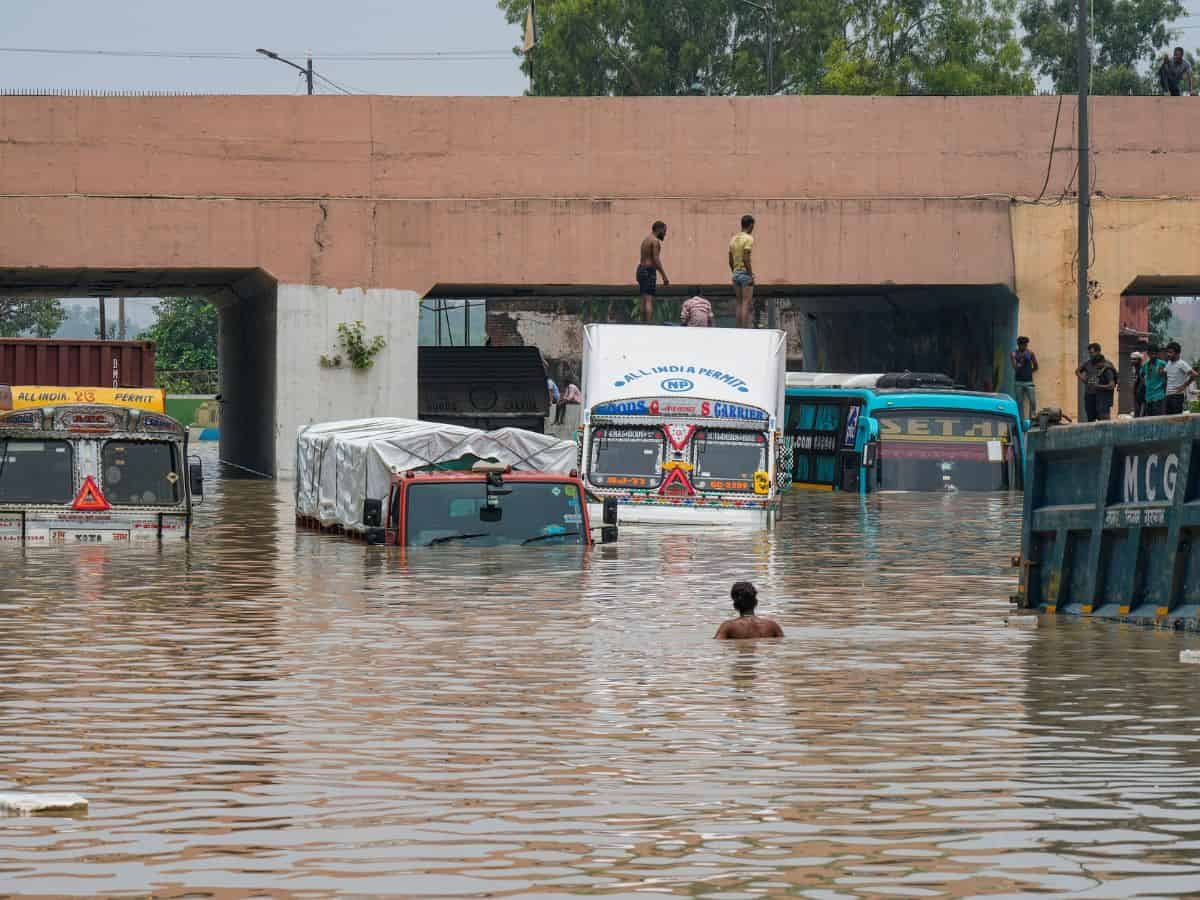
Drinking water and metro services in Delhi are set to take a hit as heavy rains continue to ravage the city, causing major overflow of the Yamuna river.
The Yamuna swelled to a staggering 208.48 metres Thursday morning, inundating nearby streets and public and private infrastructure, and causing immense hardships to people living in close proximity to the river.
Major floods in Delhi occurred in 1924, 1977, 1978, 1995, 2010 and 2013.
On Wednesday, the water level had breached an all-time record of 207.49 metres set 45 years ago.
Earlier in the day, Delhi Chief Minister Arvind Kejriwal said water supply may be affected in parts of the city with the shutting down of treatment plants at Wazirabad, Chandrawal and Okhla following rising levels of the Yamuna.
“Due to increase in the Yamuna water level, many water treatment plants had to be closed. I personally visited the Wazirabad plant on the banks of the Yamuna. We will start it as soon as the situation returns to normalcy,” he tweeted.
In a separate announcement, the Delhi Metro Rail Corporation had announced that entry and exit of passengers at the Yamuna Bank Metro Station on the Blue Line has been temporarily closed as the Yamuna continued rising.
“Entry and exit at Yamuna Bank Metro Station has been temporarily closed due to the rising water levels of the Yamuna River. However, interchange facility is still available and services on Blue Line are running normally. Kindly plan your journey accordingly,” the Delhi Metro Rail Corporation (DMRC) tweeted.
The Delhi police has also imposed prohibitory measures under CrPC section 144 in flood-prone areas of the city, preventing unlawful assembly of four or more people and public movement in groups.
Experts blame extreme rain, encroachment of floodplains
A senior official at the Central Water Commission (CWC) told PTI that encroachment and siltation could be the main reason for water released from the Hathnikund Barrage taking lesser time to reach Delhi than in previous years. According to him, the water has lesser space to flow now and passes through a constricted cross-section.
Numerous other experts also cited extreme rainfall as the major reason behind the raging Yamuna. Talking to PTI, Country representative of the International Union for Conservation of Nature (IUCN), Yashveer Bhatnagar, attributed the record water level in the Yamuna to intense rainfall in the entire upper catchment area.
(With inputs from PTI)



